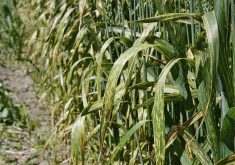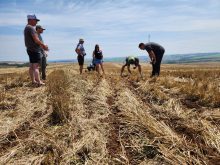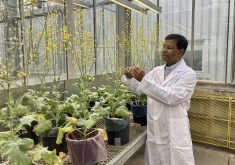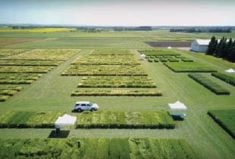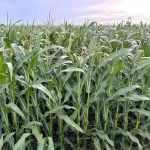Agriculture research can offer as much as a tenfold return on investment — but it doesn’t do farmers a whole lot of good gathering dust on a shelf somewhere.

“I think that’s something we actually fail at in our current delivery system of research and extension,” said Ken Coles, general manager of Alberta-based Farming Smarter. “Once a project is done, we really don’t have any funding or support to follow up on it to ensure the findings are out there and being used.
“Then we end up in the same place of having this great knowledge sitting on a shelf.
“There needs to be a little more attention to creating an overall knowledge and innovation system to ensure that we’re making best use of the investments that we’ve made in research,” said Coles.
Here are three recent research projects that producers can put to good use on their farms this summer.
Read Also

The long march to autonomy
The big players in the machinery market keep adding pieces towards autonomous vehicles for farming, but how far away is a final product?
Night spraying
For Coles, a night-spraying project is “one of my favourites.”
“It’s more relevant now than ever, and we learned a lot of cool things that are really quite practical — things that farmers can do today,” he said.
In a three-year study, the organization looked at the effects of time of day on herbicide efficacy.
“Herbicide resistance continues to grow, so the more knowledge we have as far as the impacts of environmental conditions on our efficacy, the better off we’ll be,” said Coles.
“Even here on our own farm, we’re dealing with wild oat resistance and kochia resistance. When we’re trying to manage our trials and rotations, it’s getting to be a big thing.
“It’s so important to come back to that understanding of what the environmental impacts are on the growth of weeds.”
In southern Alberta, where Farming Smarter is based, producers like to spray early to beat the wind — but researchers found that, by and large, early morning was the worst time to spray.
“We’ve been super windy again this year, and people are trying to get up at five in the morning to spray,” he said. “But when you have those cool nights and those plants are under stress for any period of time, they’re not growing actively and they’re not taking up the herbicide.
“The same thing happens with heat. Whether it’s cold or heat or any other stress, that really does impact the job that we do on herbicide efficacy.”
It also depends on the crop and location, he added. For barley, daytime application was the least effective timing at all locations, while dawn applications at Brooks produced higher yields. In Lethbridge and Lacombe, nighttime application was most effective.
Canola saw the best results from daytime application in Lethbridge and Brooks, while application at dawn worked best in Falher. For peas, dawn and nighttime applications were most effective, but for wheat, time of day didn’t seem to make a difference. (However, disease levels were low during the project, conducted from 2013 to 2015.)
Given the differences between crops and locations, Coles would like to explore the relationship between time of day and spray efficacy further. But for now, producers should be looking for ways to optimize their spray timing on their own operations based on their own conditions, he said.
“When you layer in all the resistance issues, it adds up to something that’s really quite important to consider.”
Root rot testing
Researchers have spent the past five years trying to get a handle on how widespread aphanomyces root rot is within pea and lentil fields — and what, if anything, they can do to slow the spread.

“The foundational finding was really that aphanomyces is present all over the Prairies,” said Syama Chatterton, a plant pathologist with Agriculture and Agri-Food Canada.
“It’s not that there’s one area where you have higher risk than others — it’s widespread.”
But what producers may not know is that an infestation almost always starts in a low spot in the field.
“If you’re looking at doing soil sampling or testing for aphanomyces, that’s the place to start,” said Chatterton.
“You really want to pay attention to any small yellow spots in your field. It can really expand to a large area of your field the next time you plant peas or lentils.”
At the same time, researchers developed a new DNA test for aphanomyces that has since been shared with testing labs.
“Basically, with some of the older tests, you needed to have a really high level of aphanomyces in order to use them. So we were trying to look at something that would be a little more robust,” she said.
The tests worked great between 2014 and 2016, but since a series of dry years started in 2017, it hasn’t been as effective.
“We’re spending a lot of time right now trying to figure out why that is and how we can optimize the test so that it will still work in these dry soil conditions.”
Another work in progress tied to these tests is an analysis tool for assessing the risk based on inoculum levels in the soil. Again, dry conditions have caused some issues with false positives, so work on the tool is still underway.
“It’s been going on for three or four years,” said Chatterton. “But we agree that it’s going to be the foundational tool for managing root rots and being able to assess what that root rot risk is in your field.”
That’s key because there really are no in-crop management options.
“What we’ve learned is that you have to pay attention to your crop when it’s growing so that you can manage the risk for the next time you’re choosing to grow peas and lentils in that field,” she said.
“When I see all these reports of very high rainfalls from areas, it makes me think it might be a bad aphanomyces year.
“We’re really advising farmers to be out there paying attention to those small yellow spots in the field and getting their plants tested when they can so that they know what the risk is the next time they plant peas and lentils in that field.”
Variety-specific management
Different crops respond differently to inputs — but did you know it can also be true for different varieties of the same crop?

“This was kind of the first eye-opener that different varieties can really benefit from differential management,” said Alberta provincial research scientist Sheri Strydhorst.
“Growers can save input dollars when they adjust their management and use the agronomy tools that link specifically to a cultivar.”
Researchers took an in-depth look at AC Foremost, an older CPS wheat cultivar that seemed to respond well to fungicide applications. (Foremost has since been reclassified as a CNHR wheat.)
“We found that what that variety responded really well to was dual fungicide applications,” she said. “We were seeing up to a 17 per cent yield increase with that fungicide application. We saw a two per cent yield increase from a plant growth regulator application, but when you weigh the two, it’s that fungicide that really helps out.”
But when AAC Penhold (touted as Foremost’s replacement in the CPS class) hit the market, it didn’t respond to fungicides in quite the same way.
“With Penhold, we saw a seven to 15 per cent yield increase in five out of 13 site years,” she said. “We got a decent yield increase, but it didn’t happen frequently — certainly less than half the time. Whereas Foremost was showing an 11 to 56 per cent yield increase in 10 out of the 13 site years.
“That yield response is very different. It does impact how a grower needs to manage the two varieties.”
Growing conditions also impacted the yield response.
“If we had really wet conditions for Penhold — over 10 inches of rain over the growing season — we found that it did require the fungicide,” she said. “But if it was a drier, more typical year, it didn’t see the response. Whereas Foremost got yield responses to fungicide applications in both wet and dry years.
“Even when we had a growing season with only 4.6 inches of rain, we still had a yield response to the fungicide in Foremost.”
While those results are very specific to Strydhorst’s study, producers can apply those findings on their own operations simply by understanding that different varieties may need different management.
“It takes a ton of work to figure out the specifics of it, but I think the big realization for farmers is that not all varieties benefit from the same management,” she said.
“It was really an eye-opener that we can do better by linking genetics and management. I think when they have that in mind, that sets the bar for things like strip trials and seeing how a new variety performs in their systems.
“The old ways won’t necessarily be optimized for the new genetics.”
Strydhorst’s research will continue to explore the relationship between environment, genetics, and management, but in the meantime, producers can start testing some of these things on their own farms.
“We want to recommend that growers take small steps and try this on some randomized strips in their fields. Don’t jump all in,” she said.
“The way we manage our wheat is changing, and we want growers to make sure they have systems that will work on their own farms. Starting to play with these things little by little is a great way to start.”



